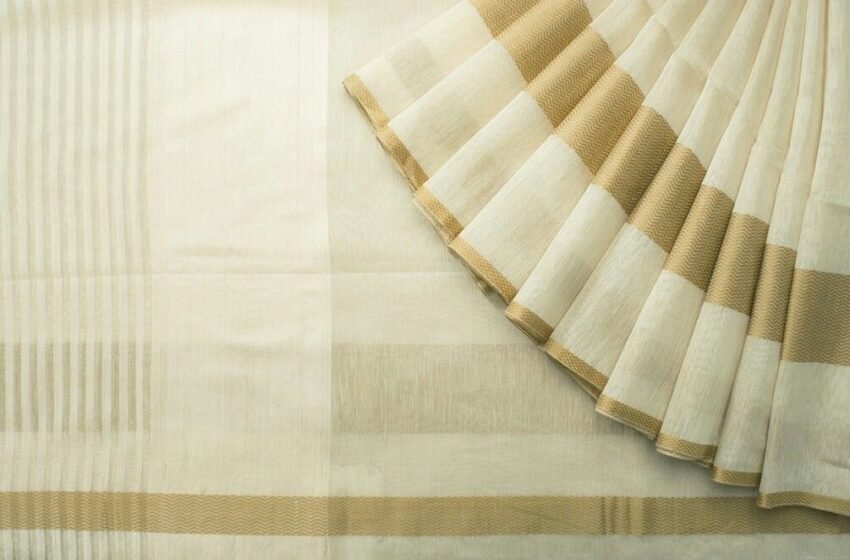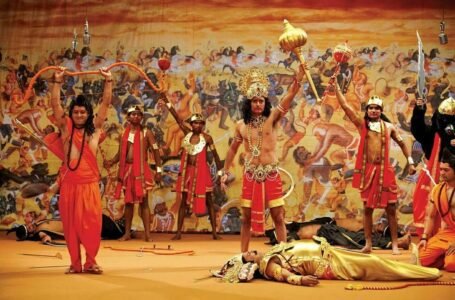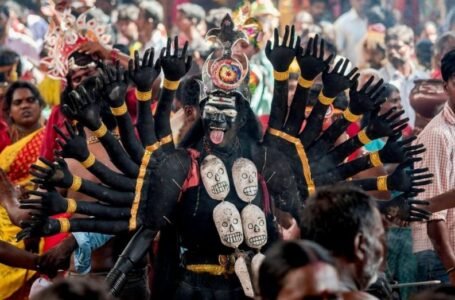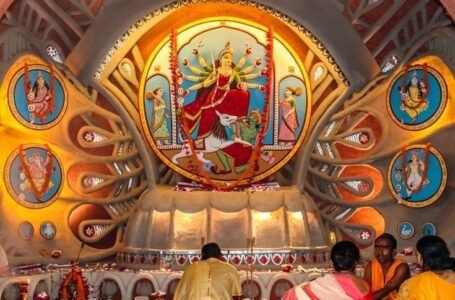Kasavu Saree: Weaving Kerala’s Golden Heritage Through Threads of Time

– Bhoomee Vats
Used in the border of the saree and not in the saree itself, the term “kasavu” refers to the Zari that is used in the border of the famous Kerala sarees, making it the name of the material which is used in the manufacturing process of the saree. Extending this term, when this zari border is added to a dhoti, referred to as “mundu”, it becomes “kasavu mundu”. Kerala, as a state, thrives on the handloom work, kaithari, when it comes to different kinds of clothing, namely, sarees, mundus, settu mundus, etc. The government of India gives out Geographical Indication (GI) tags to different states, and the identity of a sari usually comes from the cluster they are associated with. Similarly, Kerala has three clusters that the Indian government has given a GI tag, and all of them produce the famous kasavu sarees. Other than the white Kerala sarees, some swap the kasavu border with a coloured one, which is called “kara”. The three famous clusters of the state of Kerala are Balaramapuram, Chendamangalam, and Kuthampully.
The Balaramapuram cluster is situated near Trivandrum, and the artisans who work here are from the Shaliar clan. The cluster of Balaramapuram is famous for its use of pure zari work, which is a silver thread plated in gold, and very fine thread counts. The second cluster of Chendamangalam is famous for sarees and mundus that are generally woven using half-fine zari and 80s-100s thread counts. They had the patronage of an aristocratic family called Paliam. Last but not least, the Kuthampully cluster also makes white sarees with zari, but these include patterned and jacquard borders, which consist of human figure motifs.
The Process of Crafting
The entirety of the production time depends on the number of thread counts. A saree as simple as the plain ones, which include just a border and a stripe on the end, can take up to three or five days. But if any saree includes patterns and designs, it will most definitely take much more time than that. Some sarees have extremely detailed designs and patterns on them, especially the ones prepared specifically for wedding ceremonies, and these sarees usually take up to a month to be created, as all the work is done by hand. The pricing depends on the amount of work and hours that go into making these. Purchasing directly from a cluster can cost a basic cotton sari for 3,000 rupees, which can be considered very underpriced for something in which so much work goes in, but when the zari is included, the price can easily go up to 1.5 lakhs, depending on how much gold and labour have gone into it.
The yarn should be hand-spun traditionally, but these days, they use mill-made yarn because hand-spun is both expensive and difficult to mass-produce. They put this yarn through a long pre-weaving process, at Chendamangalam, this process got them their GI tag. Once they get the yarn, it is soaked in water for seven or eight days, and stamped on every day, which is done by the artisans with their feet, while it’s soaking, to get the dirt and starch out and make sure it is completely soft. The yarn is taken out after a week, and part of it is dyed, if it is required. Then, they make the warp and stretch the yarn. But according to tradition, this stretching has to be done between four and seven in the morning, as the temperature and atmosphere during those hours were considered apt for this process. Technically, the yarn has to be stretched in an open area, but in the current scenario, it’s difficult to find that kind of space. Before the warp is put on the loom, the artisan re-starches it in the morning and allows it to dry. Then they starch it once more and brush it with a comb made out of coconut fibre. It is dried until 7:00 am and then put on the loom. This stretched yarn is clean and absorbent, and the starch is added so it doesn’t break on the loom. Beyond this, there is really no post-weaving process. They just take it off the loom and put it on the shelf.
Sarees and Special Occasions
The Kerala sari and mundus are very minimalistic because they’re predominantly white with a plain weave on the body. The only design element these garments have is the border, which is the selvedge, and it has a rib weave to add a more solid look to the gold or colour. Patterning is minimal and happens sometimes with weft inlay or using jacquards. However, it is this very simplicity that makes Kerala saris and handlooms so special. They have an extremely minimal approach to design. The difference between what you wear to a wedding, which is a sari with a two-inch gold border, and what you wear to a funeral, a sari with a half-inch coloured border, is simply in the colour and thickness of the border. Basically, when you add gold, it becomes a luxury product.
In terms of the colour scheme, there really is no definite answer for why all the saris are white. One argument is that there’s so much green and colour in Kerala that people choose to wear neutral. Another technical reasoning says that since Kerala gets so much rain, the dyeing process was difficult. A third school of thought links the white to the predominant gold culture here. Since a lot of the adornment came from jewellery, the fabric didn’t need to be patterned. In 2018, the Chendamangalam cluster was badly affected by the floods that took place in Kerala, and they lost a lot of their looms in Kochi. What was worse was that the water had entered the stock room, and 40 lakhs worth of stock could have gotten stained. So, we launched a social media campaign to help sell their stock on an urgent basis.


